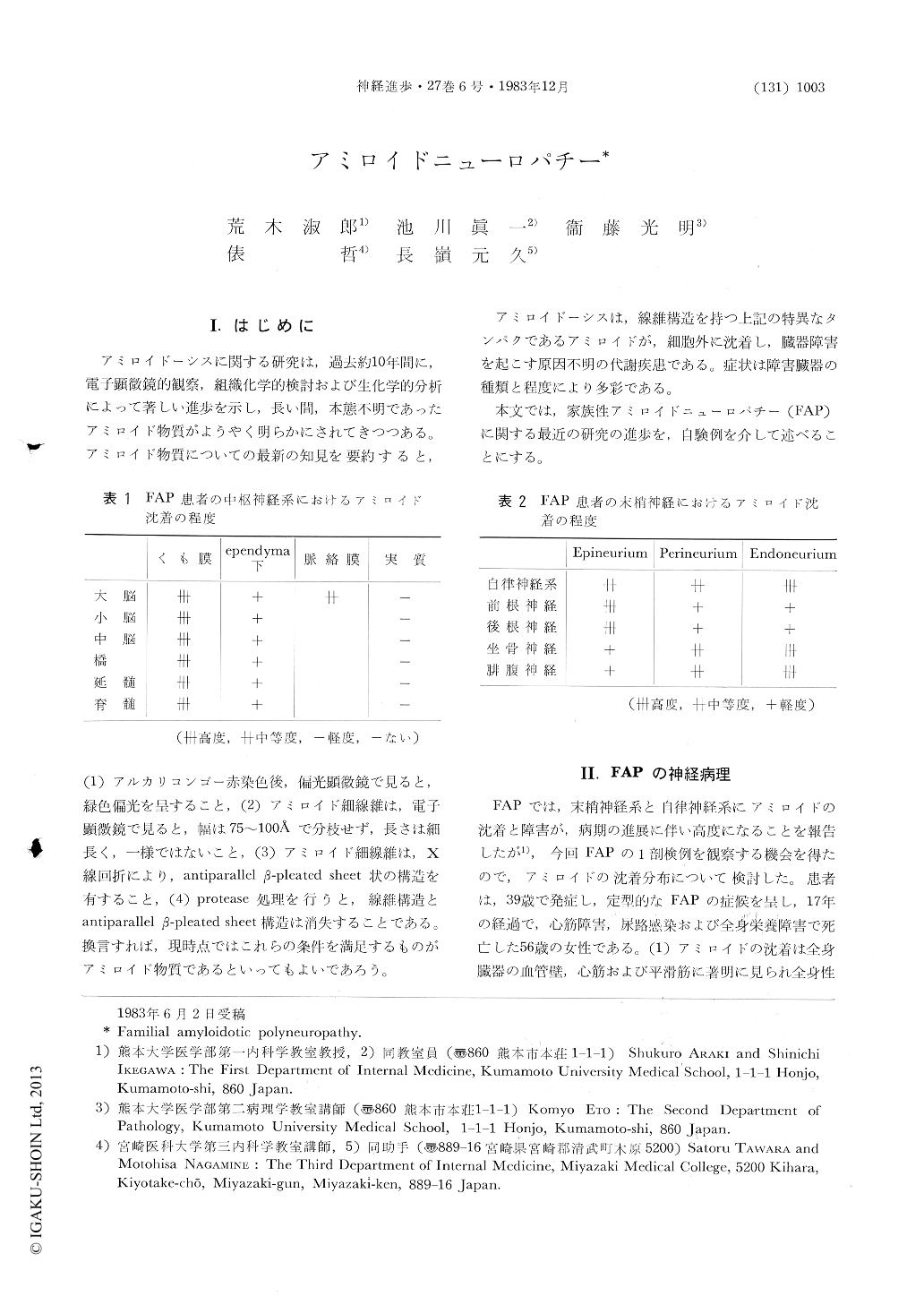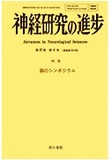Japanese
English
- 有料閲覧
- Abstract 文献概要
- 1ページ目 Look Inside
I.はじめに
アミロイドーシスに関する研究は,過去約10年間に,電子顕微鏡的観察,組織化学的検討および生化学的分析によって著しい進歩を示し,長い間,本態不明であったアミロイド物質がようやく明らかにされてきつつある。アミロイド物質についての最新の知見を要約すると,(1)アルカリコンゴー赤染色後,偏光顕微鏡で見ると,緑色偏光を呈すること,(2)アミロイド細線維は,電子顕微鏡で見ると,幅は75〜100Åで分枝せず,長さは細長く,一様ではないこと,(3)アミロイド細線維は,X線回折により,antiparallel β-pleated sheet状の構造を有すること,(4)protease処理を行うと,線維構造とantiparallel β-pleated sheet構造は消失することである。換言すれば,現時点ではこれらの条件を満足するものがアミロイド物質であるといってもよいであろう。
アミロイドーシスは,線維構造を持つ上記の特異なタンパクであるアミロイドが,細胞外に沈着し,臓器障害を起こす原因不明の代謝疾患である。症状は障害臓器の種類と程度により多彩である。
This paper described the results of our recent studies on familial amyloidotic polyneuropathy (FAP) in patients who belong to a large focus in Kumamoto, Japan.
1) Study on an autopsy case: The distribution and severity of the amyloid depositions was investigated. In the central nervous system, amyloid was seen chiefly in the subarachnoid membrane, and choroid plexus. Amyloid in slight amounts was seen in the subependyma. No deposition of amyloid was found in the parenchyma of the brain. The peripheral nerves were degenerated severely.

Copyright © 1983, Igaku-Shoin Ltd. All rights reserved.


